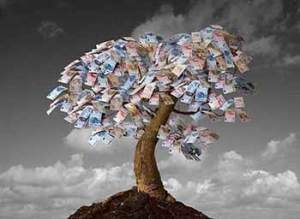 As more and more empirical evidence pours in from all corners of the globe, we can only draw one conclusion about the crude measure of species richness (i.e., number of species) – having more species around makes us richer.
As more and more empirical evidence pours in from all corners of the globe, we can only draw one conclusion about the crude measure of species richness (i.e., number of species) – having more species around makes us richer.
And I’m not talking about the esoteric or ‘spiritual’ richness that the hippies dribble about around the campfire after a few dozen cones pulled off the bong (I’ll let the confused among you try to work the meaning of that one out by yourselves), I’m talking about real money (incorporated into my concept of ‘biowealth‘).
The idea that ‘more is better’ in terms of the number of species has traditionally found some (at times, conflicting) empirical support in the plant ecology literature, the latest evidence about which I wrote last year. This, the so-called ‘diversity-productivity’ relationship (DPR), demonstrates that as a forest or grass ecosystem gains more species, its average or total biomass production increases.
To the average forester, however, this idea is anathema – nay, heretical. The backbone of forestry sylviculture has been for over a century that tightly managed, fast-rotation monoculture plots of the target woody species provide the most wood over time. Indeed, Jon Moen, one of my colleagues who invited me to a boreal forest symposium in Sweden last year, and co-author of the paper I’m about to introduce, suggested that this idea has caused quite a stir amongst foresters in Scandinavia. And so I come to the main subject of this post.
Just published in Nature Communications by Gamfeldt and colleagues, the paper Higher levels of multiple ecosystem services are found in forests with more tree species is a brilliant addition and extension to the diversity-productivity body of evidence. It not only demonstrates what now appears to be the rule rather than the exception – more trees equals more biomass production (with timber production worth about US$400 billion annually worldwide) – it also shows convincing evidence that many other ecosystem services (biowealth) improve as tree species increases: wildlife ‘game’ density, berry production, soil carbon sequestration and dead woody material density.
Now I’m impressed (and even the modelling looks pretty solid from an initial appraisal). While I’m not fundamentally surprised, I am bloody tickled that such solid empirical evidence demonstrates these properties for species-rich boreal and temperate forests. Not only that, we’re not talking about a huge range in richness here: the entire system under examination had a maximum of only 10 tree species, and few plots had more than 5 species. The big differences fell out when comparing monocultures with 5-species plots; there was no contest – more species equals more biowealth.
Another really interesting observation is that no one species was responsible for all services, leading the authors to conclude that “…monoculture practices will lead to reduced provision of at least some of the services…”. Part of the mechanism underlying this observation is the idea of ‘complementarity’, where interactions between different species give rise particular microbiotic communities that lend higher resistance to plants against pathogens or insect predators, for example.
So remember this important study when explaining to the uninitiated why losing species is bad for us all. Even a greedy, libertarian conservative will get this gist of this paper.



[…] between tree diversity and the provision of multiple ecosystem services by forests…” (covered previously on […]
LikeLike
[…] ecosystem resilience to disturbance and greater productivity (see previous posts here, here and here on this […]
LikeLike
Reblogged this on Conservation of Biodiversity.
LikeLike
[…] You saw it in Brainfood first, but now you can read a whole post about that paper linking tree species diversity with ecosystem services in ConservationBytes. […]
LikeLike
[…] Higher levels of multiple ecosystem services are found in forests with more tree species. Swedish production forests, anyway. And more. And more. […]
LikeLike
i’m really surprised this article comes so late..
this knowledge is accepted unquestioned by conservationists all over the globe for two decades now..
real task is how do we communicate the same to avaricious, shortsighted, sections of our societies and how do we convince to our governments to leave original landscapes alone?
LikeLike